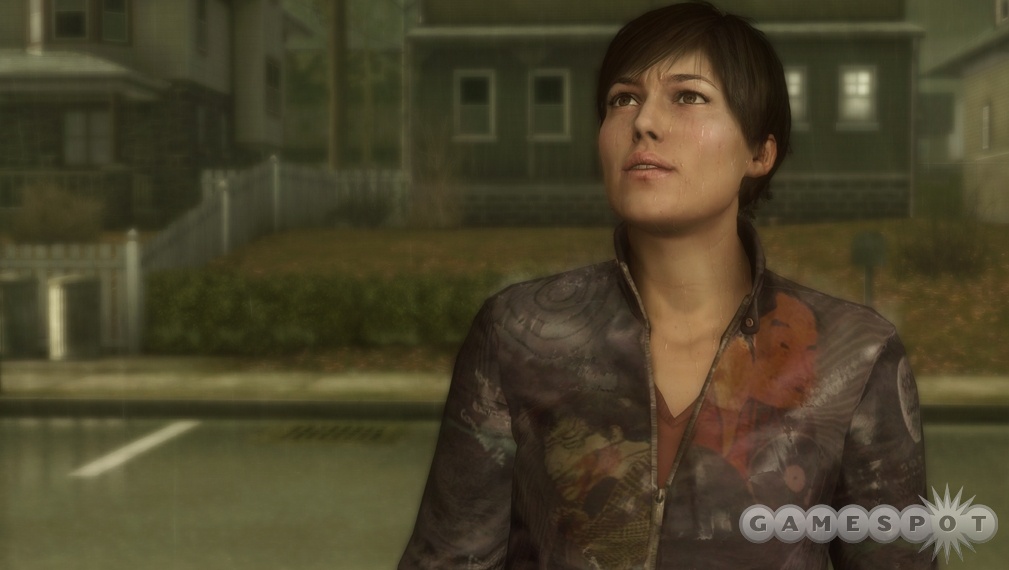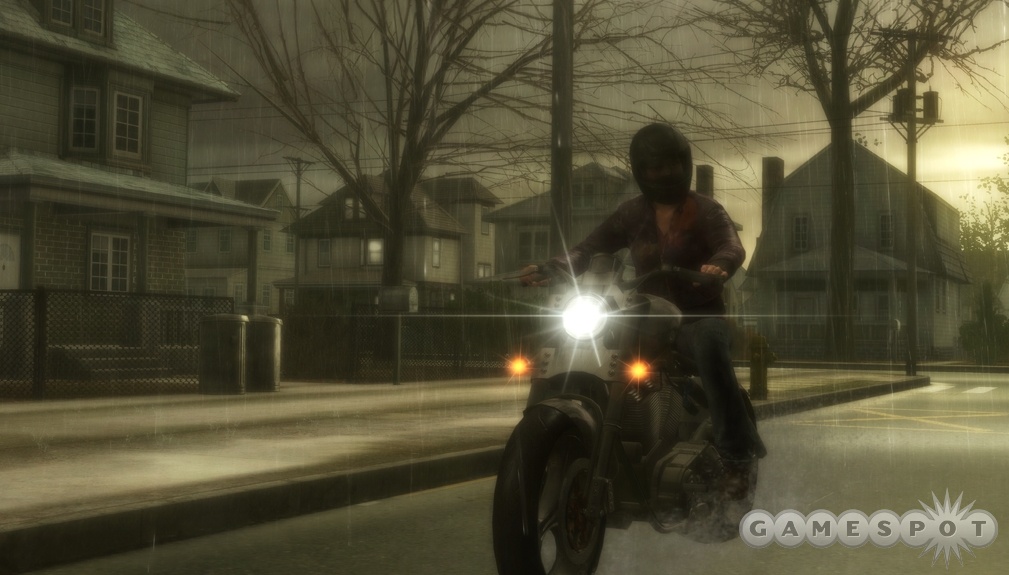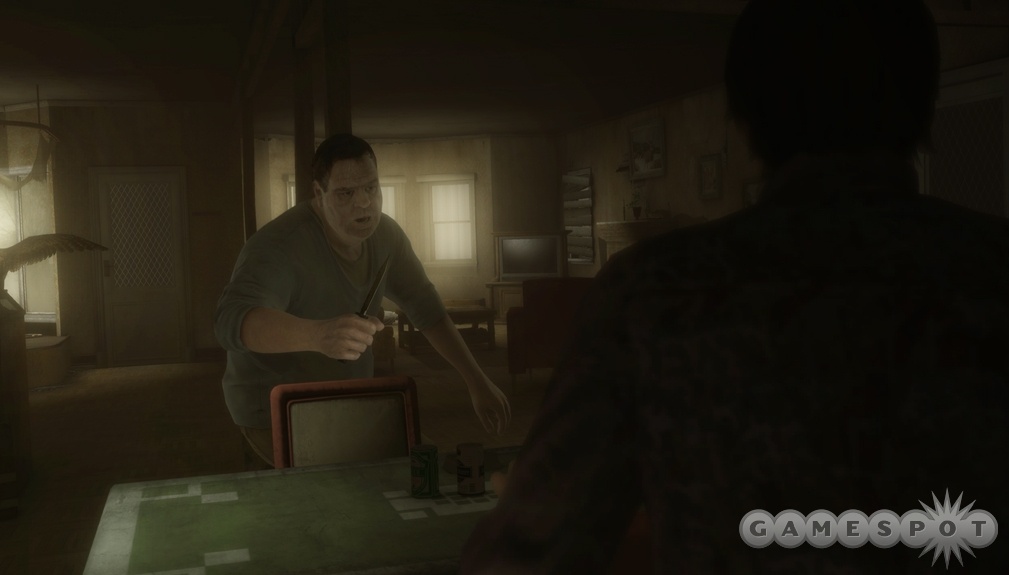Heavy Rain: The Origami Killer Impressions
Quantic Dream walks us through the gameplay of this highly anticipated PlayStation 3 exclusive.
It was during E3 of 2006 when French developer Quantic Dream, creators of Indigo Prophecy and Omikron, showed a technical demo titled "Heavy Rain: The Casting." The five-minute clip showed a virtual actress stepping into a bland room to give a rather convincing monologue to show off her acting skills. What was impressive was that we got to see the wide range of emotions that the developers had been able to pull off in real time with this actress. What began as a simple story about her falling in love turned into a dramatic performance where she went from being heartbroken to vindictive. We saw the tears stream down her face as she held a gun to her head, but then with hate-filled eyes she swiftly turned it to the camera. This short demo left people incredibly curious and excited to see what Quantic Dream had in store for the game Heavy Rain: The Origami Killer, especially as to how the game would play, given that the monologue didn't offer anything more than an audition tape. During E3 2008, we were able to get a peek at what the gameplay would be like with an entirely different storyline, which was made specifically for the presentation so that the real story would not be spoiled.

Behind closed doors, writer and director David Cage gave us an overview of what to expect for Heavy Rain. When Quantic Dream originally showed "The Casting," it was meant to be an internal technical demo that would explore the possibility of re-creating a virtual actress with the emotional dimensions that only a real actress could portray. Like Indigo Prophecy, rather than being in a genre that has already been defined, Heavy Rain is a different sort of adventure, one in which you control the story with your actions. Cage describes it as an emotional experience with mature themes in which action and narration work closely together. You aren't just the actor but also the writer and the director. The goal is to have you genuinely care about what happens to the characters by immersing you with a technique called bending stories. Cage explained that, although storytelling is linear, interactivity isn't, so his solution is to create a story that is analogous to a rubber band, a situation in which you can stretch and deform the narrative but the backbone of the story will always be there and won't change. The way the story is told will change, with invisible boundaries so that you feel that everything is in your control.
Before the demo began, we had a good look at the menu screen. The menu zoomed in on the eyes of a woman who resembled Mary Smith from "The Casting" demo. She filled the screen with her eyes as she glanced furtively left and right. It was a bit unsettling and rather hypnotic, but the detail was exquisite because the eyes looked so real. Cage explained that they created a technology to motion-capture the micromovement on the eyes of a real actress. The details on the skin and the shadows were also impressive because we saw the blemishes and inconsistencies of the skin, not an airbrushed close-up of an actress who no longer has pores. The graphics have improved significantly from the last demo, and by looking into Mary's eyes, it was as if you could see into her thoughts. The chilling piano theme playing in the background added to the mystery as we eagerly waited for the presentation to start.
We first saw a journalist named Madison as she rode a motorcycle in the rain, headed toward the house of a taxidermist. Several women have disappeared, and he has been linked as a possible suspect. Madison is only interested in getting the scoop on whether this man turns out to be the true origami killer or not. Once she arrived at the house, Madison stepped onto the sidewalk and we began to see how the controls work. Rather than using the analog sticks to maneuver her, the R2 trigger will let her move forward and the left analog can be used to move her head. It's difficult to think of this game within the traditional conventions. As the player, you are there to progress the story as you see fit, and options will be available to you as they come up. Similar to Indigo Prophecy, icons will appear in the lower right portion of the screen to indicate what you can do, whether it's moving the analog stick or tapping buttons. Madison moved forward to look in the mailbox, but whether she puts her hand in slowly or backs off is entirely up to you. You'll be in control of how the animation unfolds, and there is never any load time. The house appeared to be a more run-down version of a typical suburban home. The weather was dreary and Madison was wet from the rain. Her movements were realistic, and when left standing idle for a while, she fidgeted.
When Madison approached the door, she was prompted with options to either knock or ring the doorbell. Using the Sixaxis controller, you can also select what you want to say, given that Madison will have different thoughts come up. This thought interface will give you the pros and cons of the situation. It doesn't tell you what to do or not to do, and it's contextual, so it will change depending on where and when you are in the story.
We watched as Madison wandered into the backyard and noticed that the kitchen window was slightly ajar. Madison kicked some nearby barrels into place so that she could get into the house. Before she entered, a couple of thoughts went on in her head that you can listen to or just move on. Once inside the house, Madison walked around the living room, and we noticed that she could interact with several things in the environment. She could sit on the couch, check out the fireplace, or go through the door to the garage. We were told that you can also explore in narrow spaces and never have to worry about your character getting stuck. In the garage we saw a trail of blood and noticed that there was a garage switch on the left. She headed upstairs and we immediately noticed that the floorboards were creaking. Things started to pick up when Madison discovered a dead body in the tub and then stumbled into a room in which several women had been stuffed.

Of course, that was the perfect time for the taxidermist to return, and the screen split to show the taxidermist on the left, headed into his home, and Madison on the right as she tried to figure out what to do. The music also picked up here to drive the gravity of the situation as Madison tiptoed slowly across the hall to try to sneak out through the garage. Staying quiet, Madison got out of the house by using the garage switch, and she quickly jumped onto her motorcycle, which took a bit of button mashing before it would start. She finally got her helmet on and sped away. After this scenario, Cage explained that this was only one possible story. Like it would in the actual game, the next scenario would take this information and continue to tell the story based on what had been done. Considering that this demo wasn't following the actual storyline of Heavy Rain, we were brought back to the scene in which the taxidermist returned to his house, but this time what followed was completely different. The taxidermist heard Madison upstairs and came looking for her. We were told that there are as many as 20 to 30 hiding places in the house. As Madison hid behind a door, a sequence of buttons appeared that needed to be held to simulate the same uncomfortable feeling of being stuck. She moved to another hiding spot, at which point she came face to face with the creep. He attacked, and Madison fought back with an object that she grabbed off of the nightstand. She ran downstairs and tripped, subsequently heading to the front door to find it locked. Then she ran to the kitchen window, which wouldn't open anymore. She finally made her way to the garage, flipped the switch, and ran to her bike with the murderer close behind. She frantically tried to start her motorcycle, and when it finally did, she took off and left her helmet behind.
This was a much more intense, action-filled scenario, the kind in which you feel like you're in serious danger, but these were only two of the possible scenarios that a player could have gone through. We were told that the player controlling Madison had messed up numerous times but still managed to escape. You could have killed the villain in various ways; you could have stayed hidden and called the police. Madison could also be killed, and the fascinating part is that the game would not be over. Events would merely continue with that information taken into account. Cage was tight-lipped about any further details as to how this would work or how things would continue, but we do know that there is no game over in Heavy Rain.

We also know that there are 60 scenes in Heavy Rain, and each one will have different gameplay and narrative. The overall theme will be dark, given that it's a thriller. Cage tells us that the game will be full of twists and turns and will include many surprises. He says that it will offer a new way of interacting with a new kind of storytelling that extends beyond the cutscenes and never-ending dialogue. In this new genre, it's not about your reaction and how you move the controller, but about what decisions you make as a player to make the story unfold. The experience will be different each time.
From what we've seen so far, this is shaping up to be a game that will keep gamers talking until the shipping date. Quantic Dream has been very careful about keeping the story secret, and from this latest demo, the story and experience can only get better. In our brief adventure with Madison, we already felt like we were a part of the story in the way that the action, dialogue, and sound were handled. Visually, the characters come strikingly close to looking real, not just in terms of the graphics but also in how their movements and voice acting enhance that sense of realism. Even though it is a single-player game, watching the events unfold is just as intense and exciting for an audience.
There is no release date yet, but we're keeping a close eye on this PlayStation 3 exclusive.
Got a news tip or want to contact us directly? Email news@gamespot.com
Join the conversation